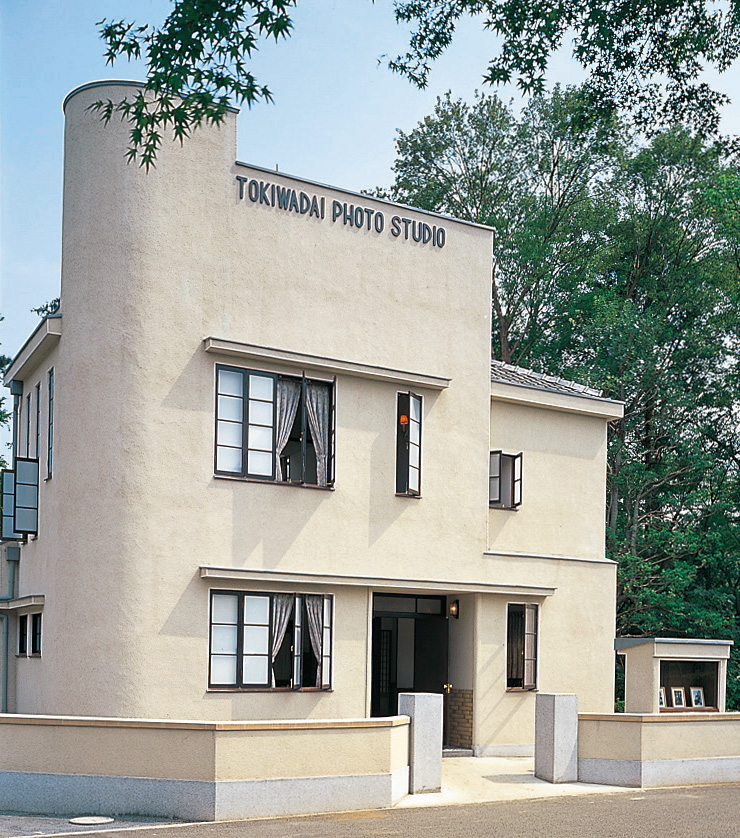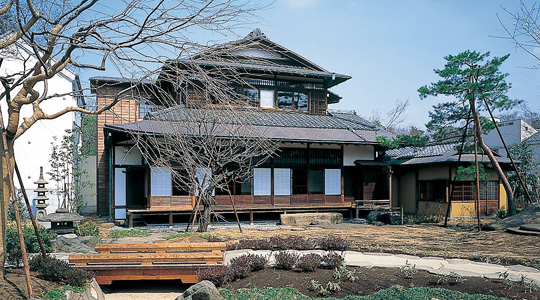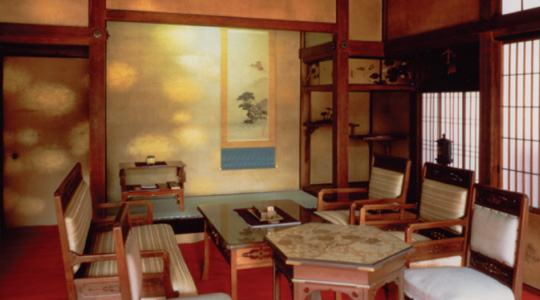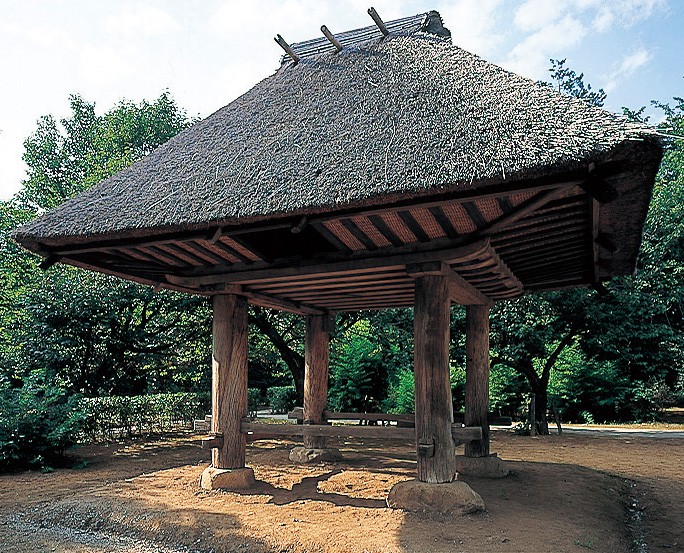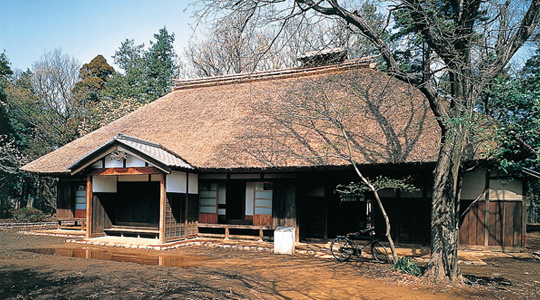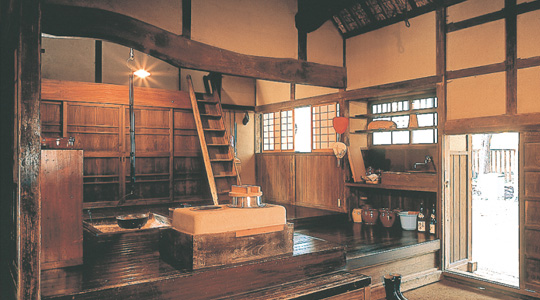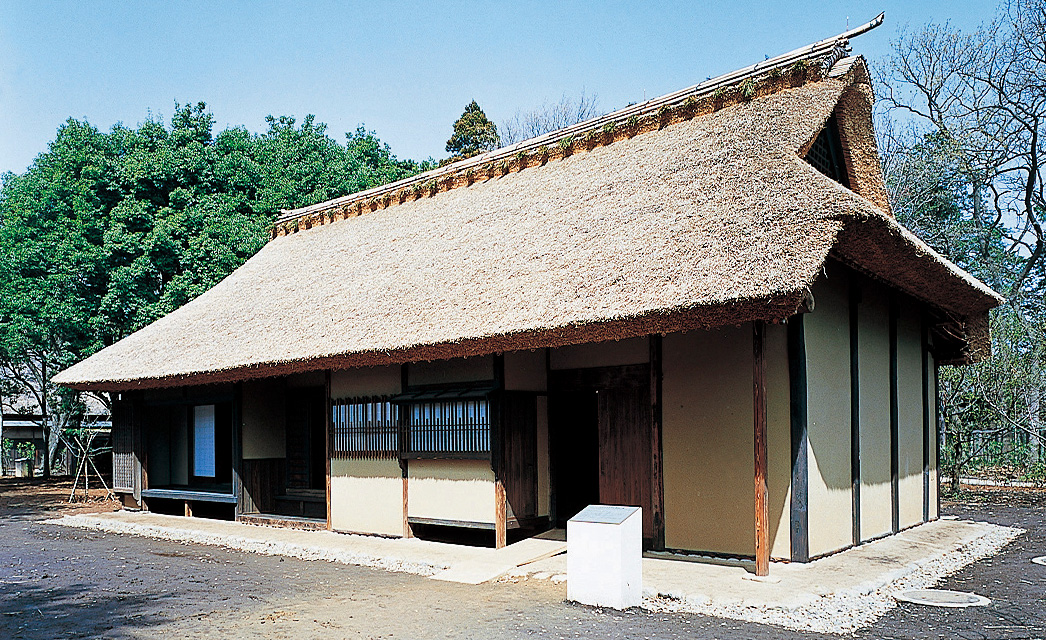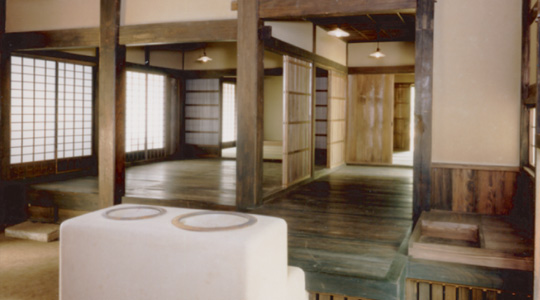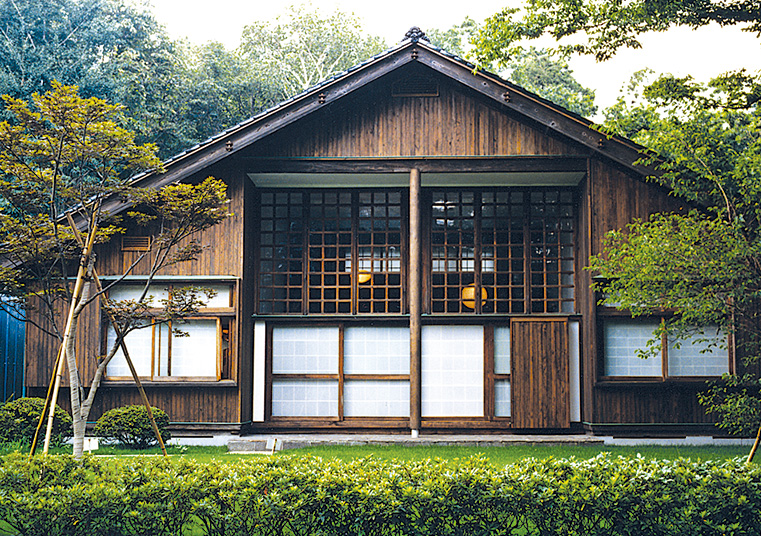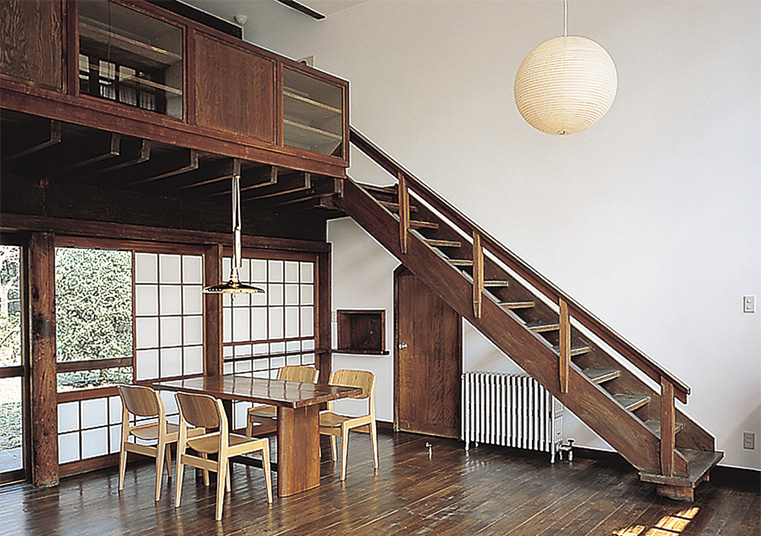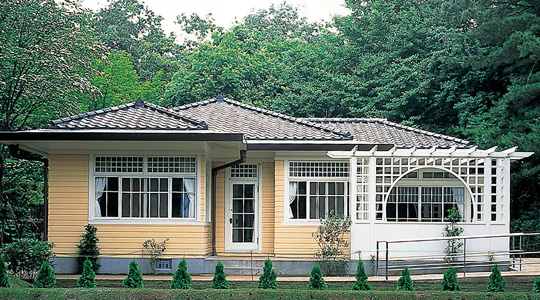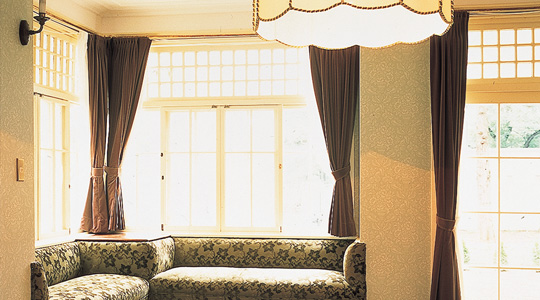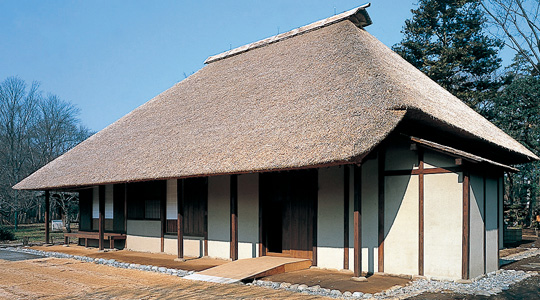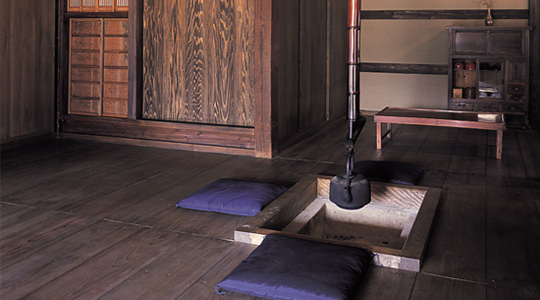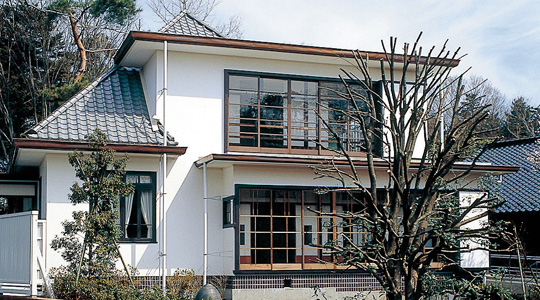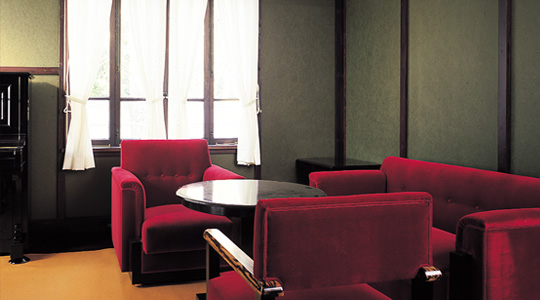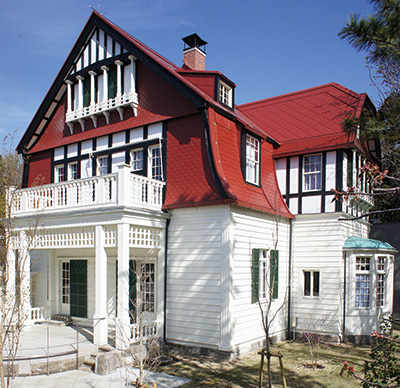- Home
- >
- Reconstructed Buildings
- >
- Reconstructed Buildings
- >
- West Zone
West Zone
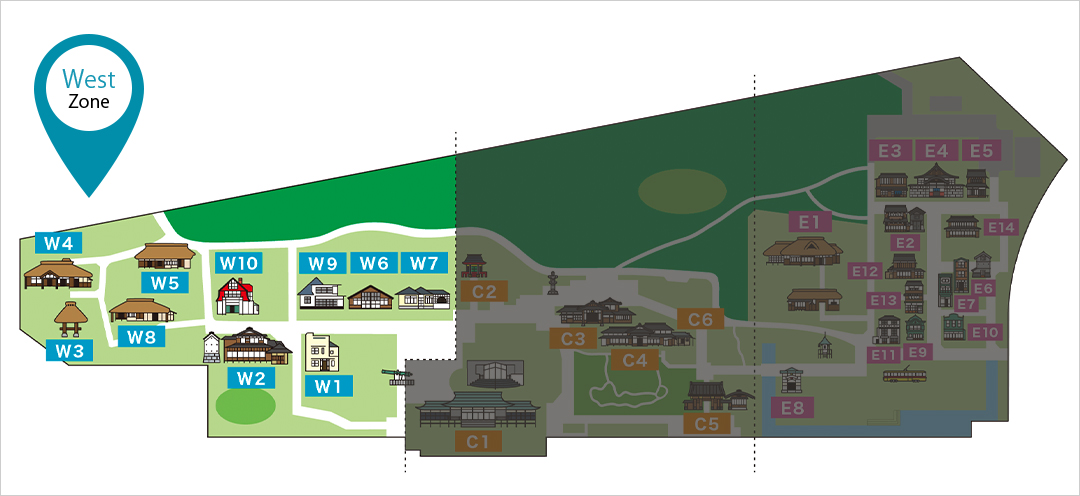
Restored houses of various architectural styles are exhibited along Yamanote Street. Farther west there are old-style houses with thatched roofs.
| W1 | Tokiwadai Photo Studio |
|---|
- Name
- Tokiwadai Photo Studio
- Built
- 1937
- Former location
- 1-chome, Tokiwadai, Itabashi Ward
- Explain
-
This photography studio used to be in Tokiwadai, which was developed as a “healthy housing area.” Since lighting equipment for photography was not fully developed in those days, frosted glass was used for the second-floor windows on the north side of the studio for lighting purposes.
| W2 | Residence of Hachirouemon Mitsui Tangible Cultural Property designated by the Tokyo Metropolitan Government |
|---|
- Name
- Residence of Hachirouemon Mitsui
- Built
- Main building: 1952, Storehouse: 1874
- Former location
- 3-chome, Nishi-azabu, Minato Ward
- Explain
-
This house was built in Nishi-azabu, Minato Ward, in 1952. The guest room and the dining room were built around 1897 in Kyoto and relocated after the Second World War. The storehouse, which dates back to 1874, has been restored to its original condition.
| W3 | Elevated Granary from Amami-Oshima Island (Collection of the former Musashino Folklore Museum) Tangible Cultural Property designated by the City of Koganei |
|---|
- Name
- Elevated Granary from Amami-Oshima Island (Collection of the former Musashino Folklore Museum)
- Built
- end of Edo period
- Former location
- Uken son, Oshima-gun, Kagoshima Prefecture
- Explain
-
This high-floored storehouse was once on Amami-oshima Island. The floor was raised high by stilts to protect the stored grain from moisture and mice. This type of high-floored building can also be found on Hachijo-jima Island.
| W4 | Farmhouse of the Yoshino Family (Collection of the former Musashino Folklore Museum) Tangible Cultural Property designated by the City of Koganei |
|---|
- Name
- Farmhouse of the Yoshino Family (Collection of the former Musashino Folklore Museum)
- Built
- late Edo period
- Former location
- 2-chome, Nozaki, Mitaka City
- Explain
-
This house was built in the latter part of the Edo period (1603-1867). The Yoshino family administered Nozaki Village (present-day Nozaki, Mitaka City) in the Edo period. The prestigious architectural style features an entrance hall with a shikidai, a low, broad wooden step, and a fixed desk in the inner room, which are characteristics of upper-class houses.
| W5 | House of the Leader of the Hachioji Guards(Hachioji-sennin-doshin) |
|---|
- Name
- House of the Leader of the Hachioji Guards(Hachioji-sennin-doshin)
- Built
- late Edo period
- Former location
- Oiwakecho, Hachioji City
- Explain
-
The Hachioji Thousand Warriors were the retainers of the Tokugawa Shogunate family, who were deployed to Hachioji in the Edo period (1603-1867). The house of the retainers’ head, which used to stand at the site bestowed by the shogun, is not as big as the surrounding farmhouses. However the fact that it has an entrance hall with a shikidai, a low, broad wooden step, which is a standard feature of upper-class houses, shows that it was a house of prestige.
| W6 | House of Kunio Mayekawa Tangible Cultural Property designated by the Tokyo Metropolitan Government |
|---|
- Name
- House of Kunio Mayekawa
- Built
- 1942
- Former location
- 3-chome, Kami-osaki, Shinagawa Ward
- Explain
-
This house was built in 1942 by the architect Kunio Mayekawa, for himself, in Kami-osaki, Shinagawa Ward. He contributed to the development of modern architecture in Japan. The house was built during the Second World War when it was difficult to procure building materials. It has a Japanese-style gabled roof and a simple layout consisting of a study and bedrooms around a living room with a vaulted ceiling.
| W7 | House of Okawa in Den’enchofu |
|---|
- Name
- House of Okawa in Den’enchofu
- Built
- 1925
- Former location
- 4-chome, Den’enchofu, Ota Ward
- Explain
-
This house was built in 1925, in Den’enchofu, Ota Ward, one of Tokyo’s residential suburbs. The dining room, bedrooms and study are arranged around the living room. The rooms are all built in the Western style, something that was very rare in those days.
| W8 | Farmhouse of the Tsunashima Family |
|---|
- Name
- Farmhouse of the Tsunashima Family
- Built
- mid-Edo period (1680-1745)
- Former location
- 3-chome, Okamoto, Setagaya Ward
- Explain
-
This house features a thatched roof and a large hall, and was built on a plateau overlooking the Tama River. The central pillar with rectangular cross-section between the hall and earth floor and an oshiita board (old-style alcove) show the history of the house.
| W9 | House of Koide Tangible Cultural Property designated by the Tokyo Metropolitan Government |
|---|
- Name
- House of Koide
- Built
- 1925
- Former location
- 2-chome, Nishikata, Bunkyo Ward
- Explain
-
This house was designed by the architect Sutemi Horiguchi, who led the Japanese modernism movement, just after he returned from a trip to Europe. It was built in a style that combined the Dutch design of those days and traditional Japanese design.
| W10 | House of Georg de Lalande |
|---|
- Name
- House of Georg de Lalande
- Built
- Ca. 1910
- Former location
- Shinanomachi, Shinjuku Ward
- Explain
-
This house is a Western-style home that was originally built in Shinanomachi, Shinjuku Ward. The German architect Georg de Lalande extended the house around 1910, transforming it into a three-story wooden structure. The house came under various owners over the years, but from 1956, Mishima Kaiun, the inventor of the lactic acid beverage Calpis, lived there.
![]() Reconstructed Buildings
Reconstructed Buildings
© EDO-TOKYO OPEN AIR ARCHITECTURAL MUSEUM All rights reserved.

























